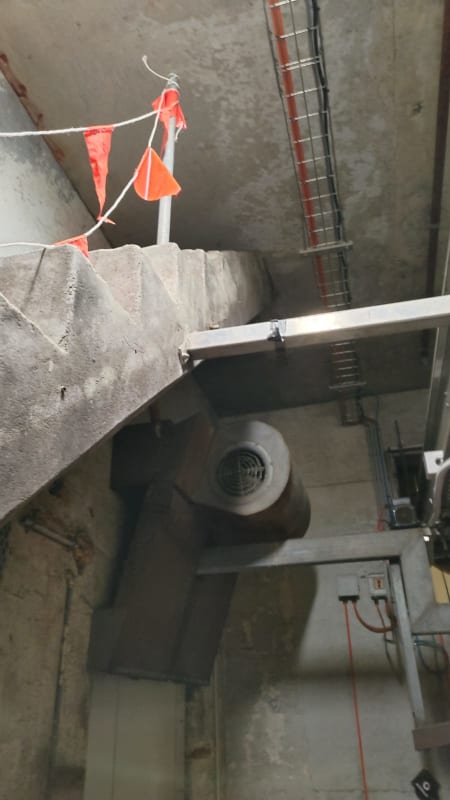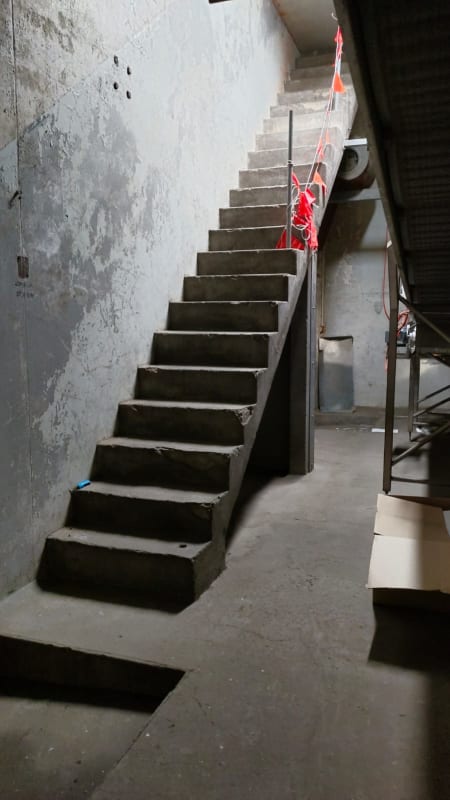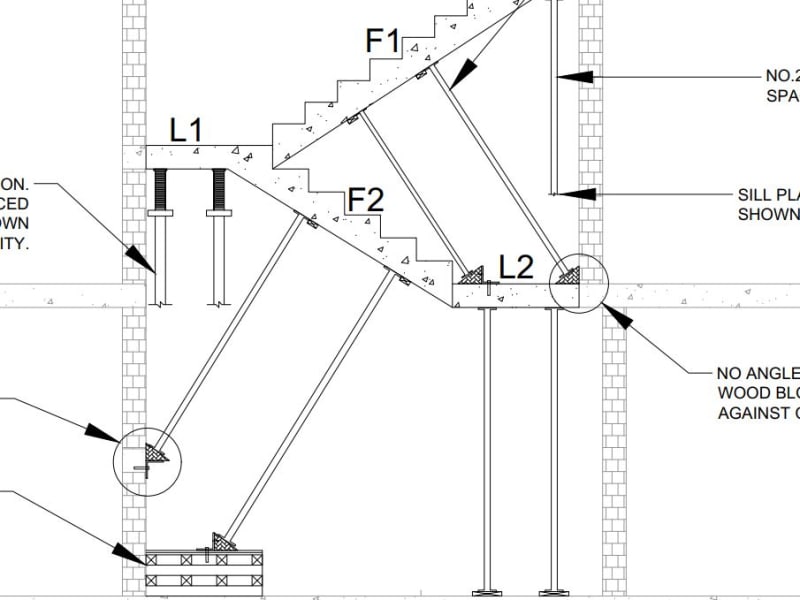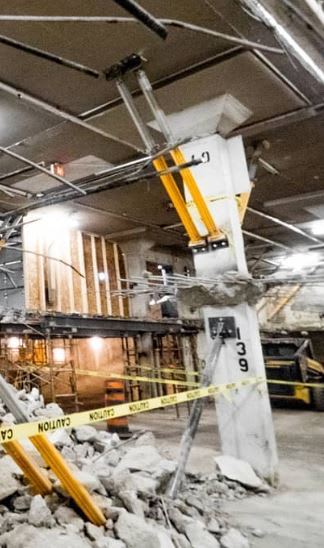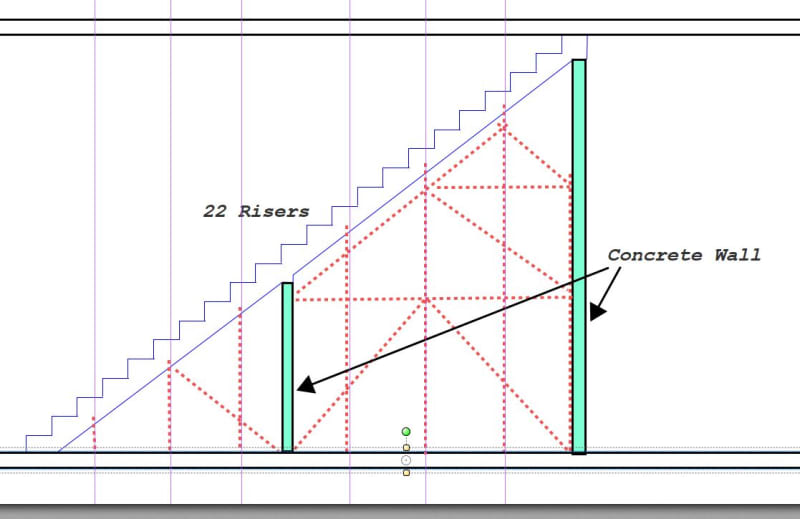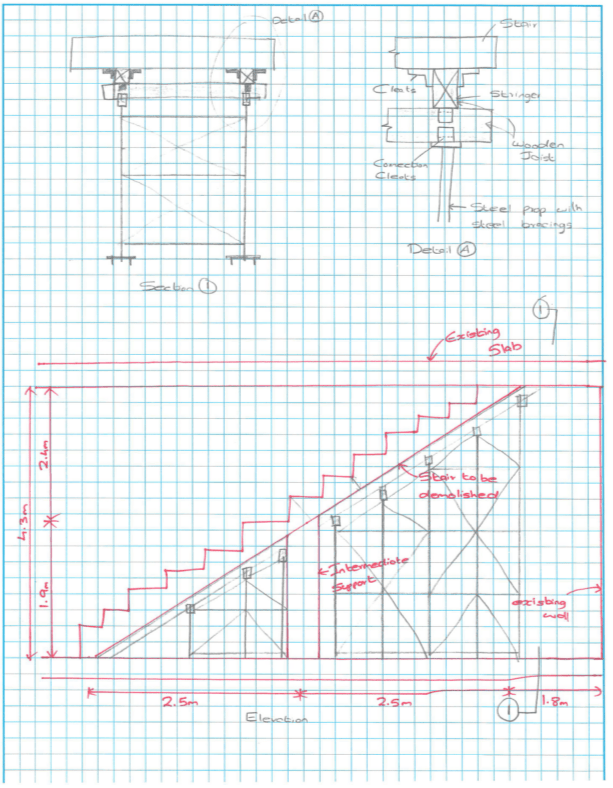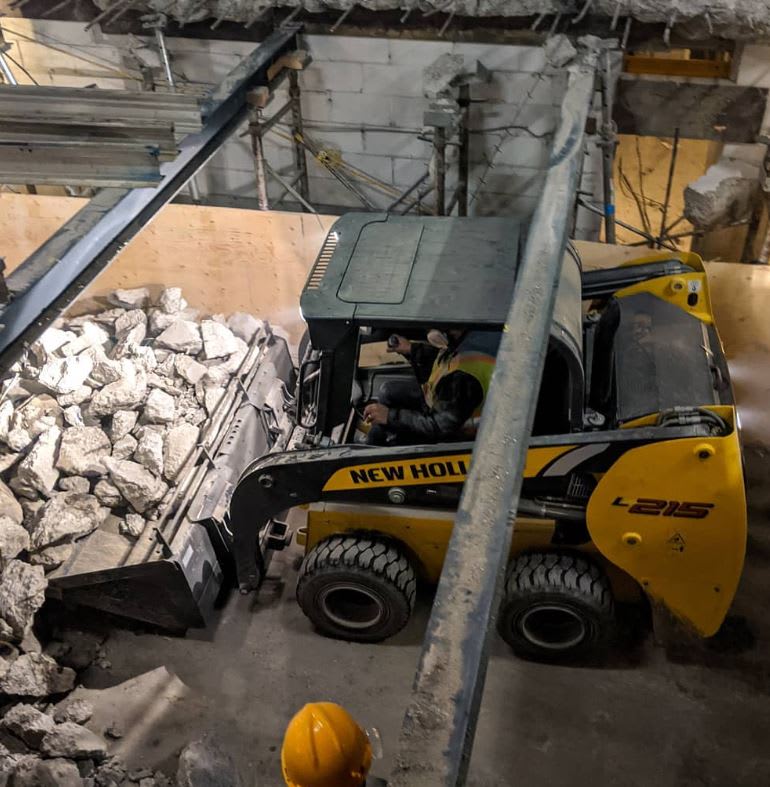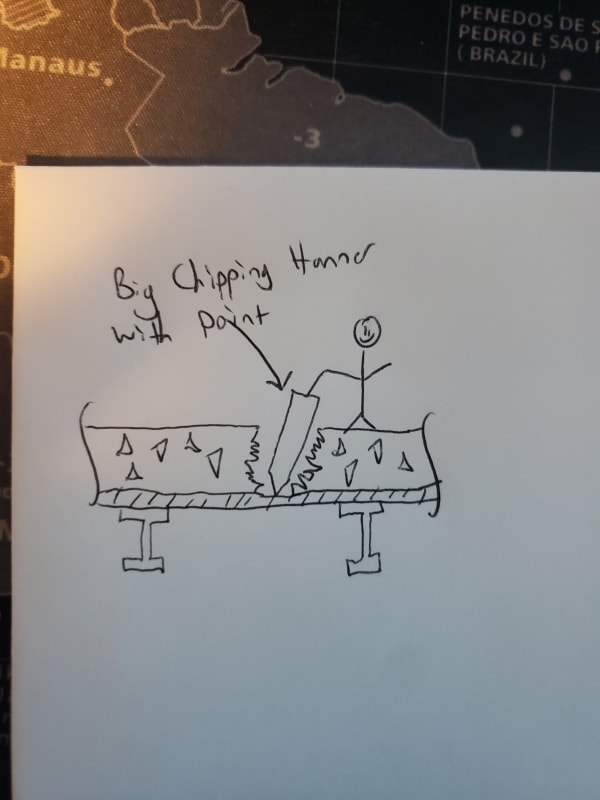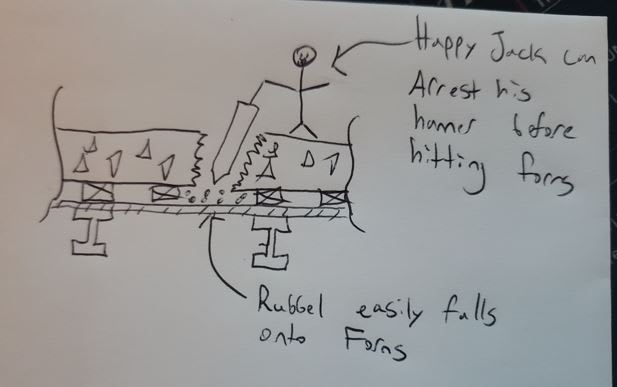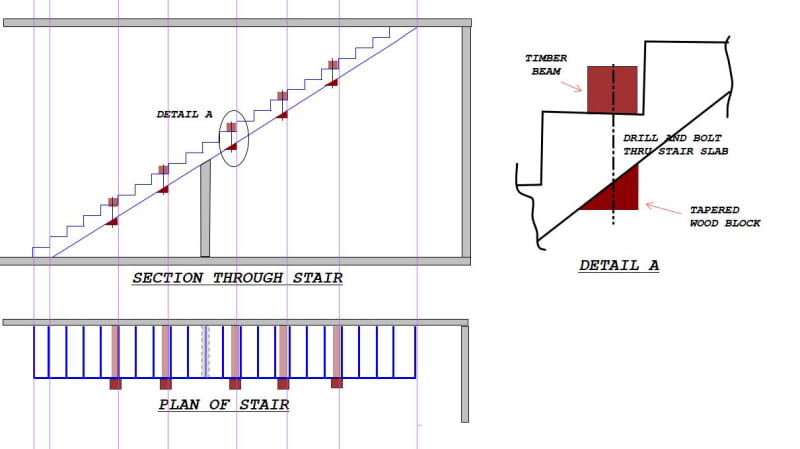@ikka They must be available in some way, because I'm sure you have situations where you need to form concrete for a tall floor, like what was done here. You can repurpose a formwork shoring post for that, and they tend to have high capacity anyway. If it's not available, you can build falsework under the taller areas and put the post on top of that, or do the angle+post like Enable showed in the picture with the diagonal brace.
I personally wouldn't use a tilt prop because it's too "pinned" for my liking. If a piece of the stairs pulls away, the prop will pull away with it. At least with regular screw jacks, they have a tiny amount of fixity. You might be able to use a tilt prop with bracing. You can repurpose some formwork bracing for that. I don't know how it is in Australia, but in USA, Doka and Titan have easily installable and reusable bracing that can clip onto posts. I still don't feel great about using them, but it can be done. I'd double check and triple check their axial load capacity.
Procedure:
1. Install shoring.
2. Protect the area and create a no-access zone. Install the bins. Protect other equipment as necessary.
3. Using hand tools like jackhammers, remove concrete stairs in 0.75m long segments. When one segment is removed, remove the shoring post under the adjacent segment and continue this step until all stairs are demolished.
4. Not sure about your code, but wetting down of flying dust with a water hose/sprayer may be required.
Notes:
1. Workers shall be tied off with fall protection while performing the work. Workers shall wear N95 masks or something similar. Workers shall observe all appropriate site safety measures.
2. Access to the work area shall be limited to workers only.
